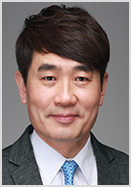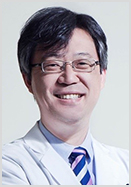-
ConsAsia
Information - Speakers
- Program
- Call for Abstracts
-
AOFCD
Membership - Registration
-
Accommodation
& Tour -
Sponsorship
& Exhibition
- D-day
- Today 2026.01.05 D 2250
- ConsAsia 2019
- The lnaugural Meeting of the Asian and Oceanian Federation of Conservative Dentistry (AOFCD)
- November 8(Fri) - 10(Sun), 2019
- Important Due Dates :
-
- Abstract Submission Opens [March 01(Fri), 2019]
- Abstract Submission Ends [May 31(Fri), 2019]
- Acceptance Notification [June 28(Fri), 2019]
Speakers
- Page Path
-

- Speakers
- Speakers
Endodontic Session (Korean Session)
-
 민경산 (Kyung-San Min)
전북대학교
민경산 (Kyung-San Min)
전북대학교
Professor
Department of Conservative Dentistry
Chonbuk National University
-
MTA sealer를 이용한 근관충전, 나는 이렇게 생각한다
An Update On the Removal of Endodontic Biofilms Using Various Approaches More - Because endodontic disease is an infectious disease, the rationale for endodontic treatment is unarguably to eradicate the occurring infection and/or prevent microorganisms from infecting the root canal system. The microorganisms usually form biofilms so that have the ability to survive tough growth and environmental conditions. Therefore, endodontic disease is a biofilm-mediated infection, and primary aim in the management of the pathological situation is the elimination of microbial biofilms formed on the root canal wall. There have been many attempts to remove the biofilms effectively from the root canal system. Among these, active irrigation with ultrasonic device and disinfection using slow-acting intracanal medicaments are found to be effective. Moreover, some molecular biological approaches recently have gained attention as a supportive method for facilitating the biofilm removing efficacy. This presentation describes several clinical strategies for the management of endodontic biofilms using irrigation devices and intracanal medicaments. This lecture also highlights some biological approaches for future endodontic era.
-
 정일영 (Il-Young Jung)
연세대학교
정일영 (Il-Young Jung)
연세대학교
Professor
Conservative dentistry
Yonsei University
-
근관 치료 후에도 통증이 없어지지 않아요!
My Pain Is Not Better Even After a Root Canal Treatment
More - 별문제 없이 근관치료를 했는데도, 계속 통증을 호소하는 환자가 있다. 미국에서 발표된 자료를 보면 100명 중 7명 정도는 근관치료 후에도 계속 통증이 있다고 한다. 이런 통증은 완벽하지 못한 근관치료 때문일 수도 있지만, 치주 조직이나 다른 부위에서 기인한 통증일 수도 있다. 본 강의에서는 근관 치료 후에 환자가 통증을 호소하는 경우를 분석해보려고 한다.
-
 이동균 (Dongkyun Lee)
목포미르치과
이동균 (Dongkyun Lee)
목포미르치과
Endodontist
Mokpo Mir Dental Hostpital
-
개원가의 근관치료 : 경험을 넘어서
Endodontic Treatment in My Clinic: Beyond Experience
More - An experience in the clinic is valuable. It may not be easy to proceed with treatment with just the evidences. A clinicians need a process that integrates evidence and clinical experience. It may also be the case that the technique associated with experience is the only way. In order for anyone to be credible and predictable, it is desirable to pursue evidence-based practice. In that regard, we need to understand the limitations of personal experience well. The evidence-based endodontics can have a positive impact on improving each person's clinical ability. Therefore, in this presentation, I would like to talk about some of the difficulties I experienced while performing root canal treatment in my clinic and an attempt to solve this on an evidence-based endodontics.
-
 황호길 (Ho Keel Hwang)
조선대학교
황호길 (Ho Keel Hwang)
조선대학교
Chairman(Professor)
Conservative Dentistry (Endodontics)
Chosun University
-
근관치료 해도 잘 안낫는 치아
Why Does Root Canal Tooth Hurt?
More - Teeth that do not heal well even if treated by a private dentist are referred to a university dental hospital. Most of the patients requested tend to have discomfort and pain in their teeth even after root canal treatment. Therefore, in this lecture, we will look at the causes of teeth that do not heal well and provide solutions.
Adhesive Dentistry Session (Korean Session)
-
 김일영 (Il-Young Kim)
크리스탈 치과
김일영 (Il-Young Kim)
크리스탈 치과
Crystal Dentistry
-
Direct Anterior Composite Resin - Esthetic, Durable, and Easier Guide
More - When the anterior teeth are damaged with problems such as dental caries, fractures or esthetic abnormality, both functional and aesthetic restoration becomes very important not only for patient's health but also for the psychological healing. There are many ways to do this, but among them, direct composite resin restoration can be considered top priority, especially in terms of minimal invasion. Nevertheless, direct composite resin restorations have a high barriers in that they are absolutely dependent on the dentist.
-
 서덕규 (Deog-Gyu Seo)
서울대학교
서덕규 (Deog-Gyu Seo)
서울대학교
Professor
Conservative Dentistry
Seoul National University
-
Utility Player - How to Use Universal Adhesives
More - What is a “Universal Adhesives”? Recently most companies have introduced their universal adhesive systems, which can be used in total-etch, self-etch, or selective-etch mode and as a indirect restoration primer. If we can use universal adhesives in these various modes, it has a definite advantage over its predecessors. Moreover, they are simple to use and save time, which is attractive to many clinicians. We are facing another paradigm shift in adhesives. Through this lecture, we will go through the characteristics, strengths, and drawbacks of universal adhesives, and how to use them properly.
-
 박정길 (Jeong-Kil Park)
부산대학교
박정길 (Jeong-Kil Park)
부산대학교
Professor
Pusan National University
-
Clinical Assessment and Treatment of Non Carious Cervical Lesions
More - Noncarious cervical lesions (NCCLs) are characterized as structural defects found on the tooth surface of the cemento-enamel junction. Loss of tooth structure through noncarious mechanisms may vary in etiology. Previously, clinicians believed this to be caused solely by toothbrush abrasion, but presently many clinicians now classify this as tooth failure due to occlusal loading but the etiology and diagnosis of NCCLs remain controversial. Clinically, these lesions have sharp, angular, wedge-shaped defects principally found on the buccal aspects of the teeth. Loss of tooth structure in the cervical area of a NCCL may cause esthetic problems and discomfort due to dentinal hypersensitivity. NCCLs occur in a variety of forms depending on the type and severity of the etiological factor, but not all lesions require restorations. When clinically assessing NCCLs, dental practitioners must consider if the cervical defect requires a restoration and if so, which restorative material will provide the best outcome. Additionally, the clinician must consider a elastic modulus of restorative material and biomechanical stress factor of NCCL. This session will present and discuss the varieties of etiology, shape, clinical assessment and management of NCCLs.
-
 최상윤 (Sangyun Choi)
최상윤 치과
최상윤 (Sangyun Choi)
최상윤 치과
Chief Dentist
Choi Sangyun Dental Office
-
나는 어떤 시멘트를 선택해야 하나?
Which is my best choice of luting cement?
More - Nowadays, digital technology is imperatively necessary in dental practice. We, dentists need to know about new materials like zirconia, polymer-infiltrated ceramic CAD-CAM blocks, and 3D printing materials and their luting methods with suitable luting cements. This lecture will address the guidelines for choices of luting cements with various dental restorations including PFM/gold, zirconia, implant, glass ceramic, resin inlay, ,and hybrid blocks.
